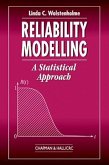In mathematics, the exponential function is the function ex, where e is the number (approximately 2.718281828) such that the function ex equals its own derivative. The exponential function is used to model phenomena when a constant change in the independent variable gives the same proportional change (increase or decrease) in the dependent variable. The exponential function is also often written as exp(x), especially when x is an expression complicated enough to make typesetting it as an exponent unwieldy. The graph of y = ex is upward-sloping, and increases faster as x increases. The graph always lies above the x-axis but can get arbitrarily close to it for negative x; thus, the x-axis is a horizontal asymptote. The slope of the graph at each point is equal to its y coordinate at that point. The inverse function is the natural logarithm ln(x); because of this, some older sources refer to the exponential function as the anti-logarithm. Sometimes the term exponential function is used more generally for functions of the form cbx, where the base b is any positive real number, not necessarily e. See exponential growth for this usage.
Bitte wählen Sie Ihr Anliegen aus.
Rechnungen
Retourenschein anfordern
Bestellstatus
Storno








